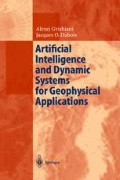Abstract
Is there life after video coding standards? One might think that research has no room to advance with the video coding standards already defined. On the contrary, exciting research opportunities arise after the standards are specified. In this paper, we introduce two standard-related research areas: rate shaping and error concealment, as examples of interesting research that finds its context in standards. Experiment results are also shown.
Access this chapter
Tax calculation will be finalised at checkout
Purchases are for personal use only
Preview
Unable to display preview. Download preview PDF.
References
Motion Pictures Experts Group, “Overview of the MPEG-4 Standard”, ISO/IEC JTC1/SC29/WG11 N2459, 1998
Trista Pei-chun Chen and Tsuhan Chen, “Adaptive Joint Source-Channel Coding using Rate Shaping”, to appear in ICASSP 2002
Trista Pei-chun Chen and Tsuhan Chen, “Updating Mixture of Principle Components for Error Concealment”, submitted to ICIP 2002
H. Schulzrinne, S. Casner, R. Frederick, and V. Jacobson: “RTP: A transport protocol for real-time applications”, RFC1889, Jan. 1996. http://ftp://ftp.isi.edu/in-notes/rfc1990.txt
J. Postel, “User Datagram Protocol”, RFC 768, Aug. 1980. http://www.ietf.org/rfc/rfc768.txt
Trista Pei-chun Chen and Tsuhan Chen, “Markov Modulated Punctured Autoregressive Processes for Traffic and Channel Modeling”, submitted to Packet Video 2002
D. M. Lucantoni, M. F. Neuts, and A. R. Reibman, “Method for Performance Evaluation of VBR Video Traffic Models”, IEEE/ACM Transactions on Networking, 2(2), 176–180, April 1994
P. R. Jelenkovic, A. A. Lazar, and N. Semret, “The Effect of Multiple Time Scales and Subexponentiality in MPEG Video Streams on Queuing Behavior”, IEEE Journal on Selected Areas in Communications, 15(6), 1052–1071
M. M. Krunz, A. M. Makowski, “Modeling Video Traffic using M/G/∞ Input Processes: A Compromise between Markovian and LRD Models”, IEEE Journals on Selected Areas in Communications, 16(5), 733–748, 1998
Deepak S. Turaga and Tsuhan Chen, “Hierarchical Modeling of Variable Bit Rate Video Sourcesrd, Packet Video 2001
S. Lin, D. J. Costello, Jr., Error Control Coding: Fundamentals and Application, Prentice-Hall
S. Wicker, Error Control Systems for Digital Communication and Storage, Prentice-Hall, 1995
B. Bellman, Dynamic Programming, Prentice-Hall, 1987
G. D. Forney, “The Viterbi Algorithm”. Proc. of the IEEE, 268–278, March 1973
A. Ortega and K. Ramchandran, “Rate-Distortion Methods for Image and Video Compression”. IEEE Signal Processing Magazine, 15(6), 23–50
H. Everett, “Generalized Lagrange Multiplier Method for Solving Problems of Optimum Allocation of Resources”. Operations Research, 399–417, 1963
Y. Shoham and A. Gersho, “Efficient Bit Allocation for an Arbitrary Set of Quantizers”. IEEE Trans. ASSP, 1445–1453, Sep 1988
J. Vass and X. Zhuang, “Adaptive and Integrated Video Communication System Utilizing Novel Compression, Error Control, and Packetization Strategies for Mobile Wireless Environments”, Packet Video 2000
H. Sub and W. Kwok, “Concealment of Damaged Block Transform Coded Images using Projections Onto Convex Sets”, IEEE Trans. Image Processing, Vol. 4, 470–477, April 1995
X. Liu and T. Chen, “Shot Boundary Detection Using Temporal Statistics Modeling”, to be appeared in ICASSP 2002
J. Huang and T. Chen, “Tracking of Multiple Faces for Human-Computer Interfaces and Virtual Environments”, ICME 2000
M. Yajnik, S. Moon, J. Kurose, D. Towsley, “Measurement and modeling of the temporal dependence in packet loss”, IEEE INFOCOM, 345–52, March 1999
Author information
Authors and Affiliations
Editor information
Editors and Affiliations
Rights and permissions
Copyright information
© 2002 Springer-Verlag Berlin Heidelberg
About this paper
Cite this paper
Pei-chun Chen, T., Chen, T., Yuh-Feng, H. (2002). Life after Video Coding Standards: Rate Shaping and Error Concealment. In: Chang, SK., Chen, Z., Lee, SY. (eds) Recent Advances in Visual Information Systems. VISUAL 2002. Lecture Notes in Computer Science, vol 2314. Springer, Berlin, Heidelberg. https://doi.org/10.1007/3-540-45925-1_18
Download citation
DOI: https://doi.org/10.1007/3-540-45925-1_18
Published:
Publisher Name: Springer, Berlin, Heidelberg
Print ISBN: 978-3-540-43358-3
Online ISBN: 978-3-540-45925-5
eBook Packages: Springer Book Archive

